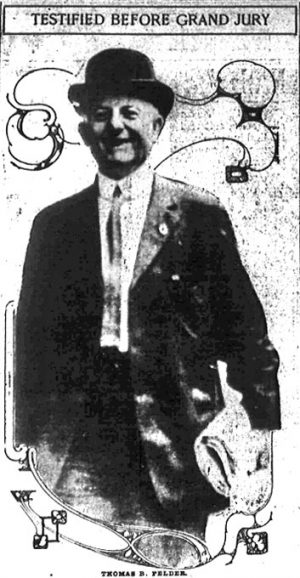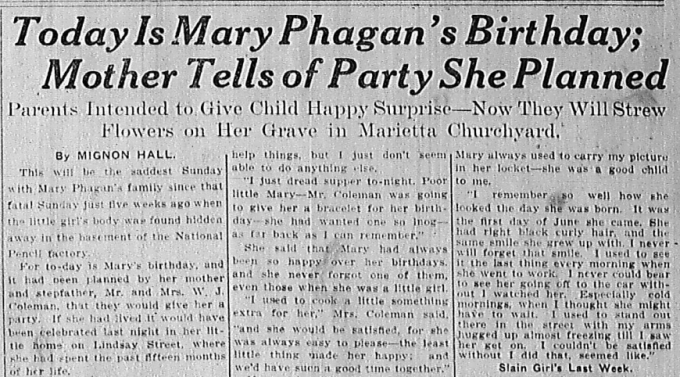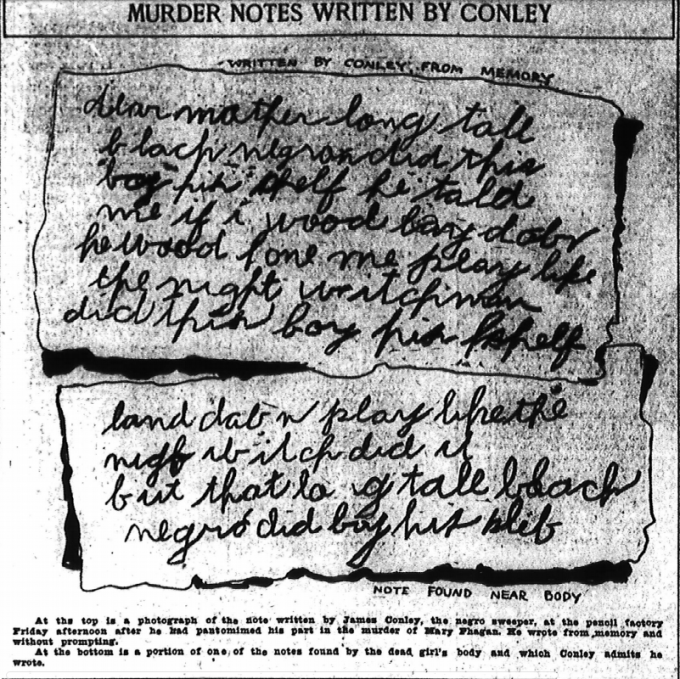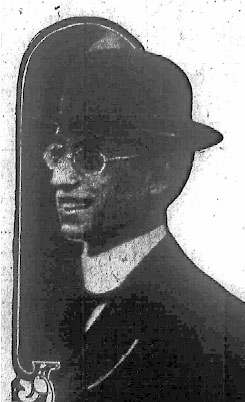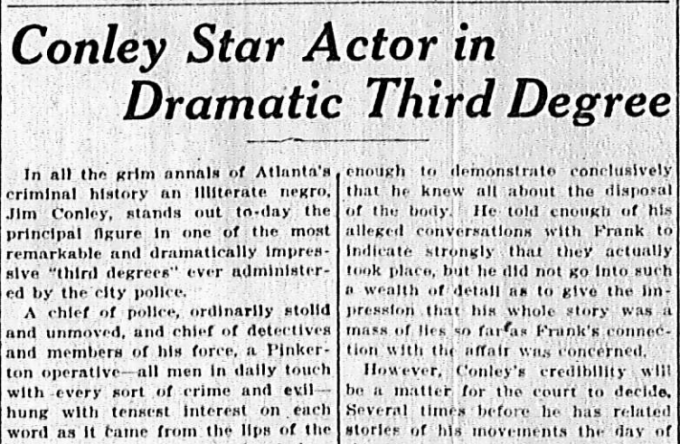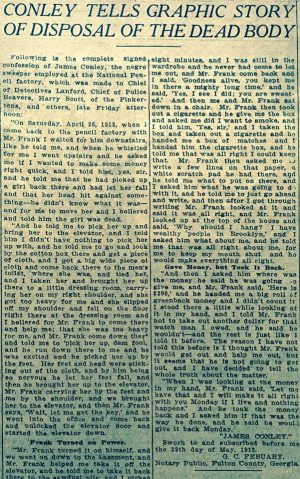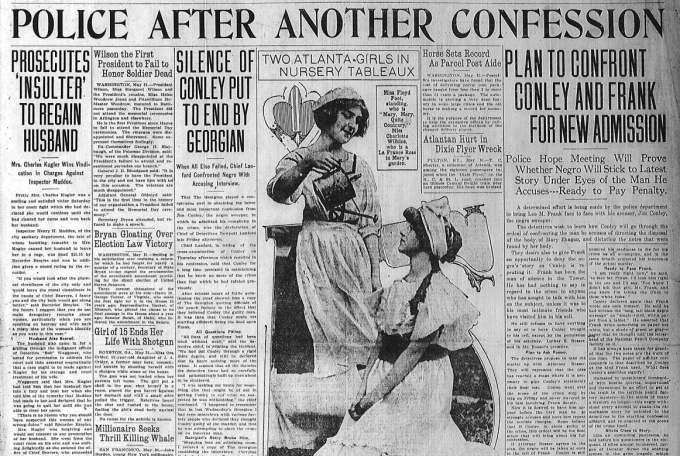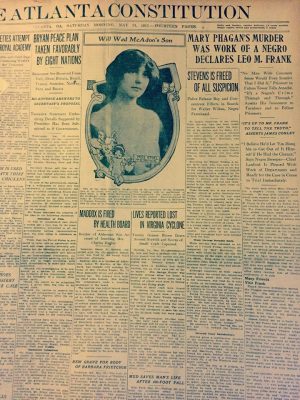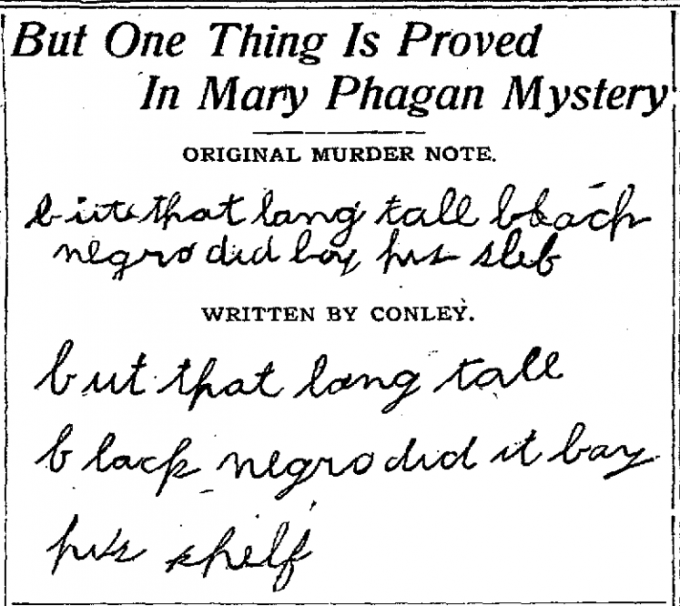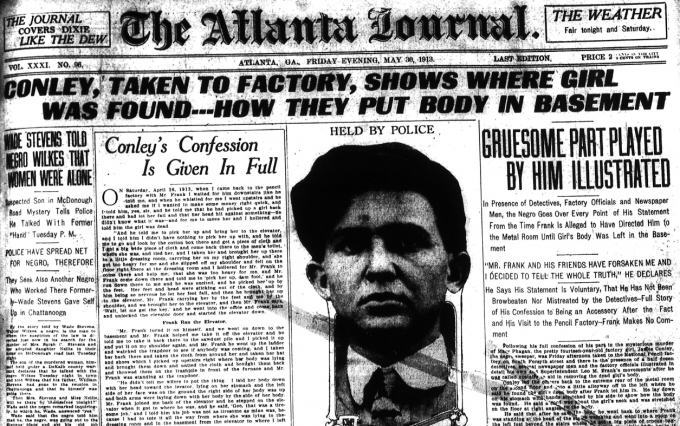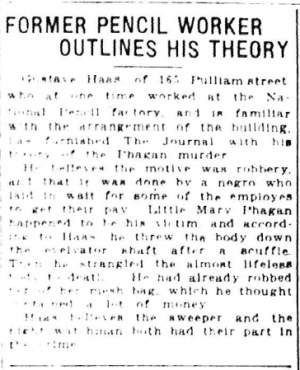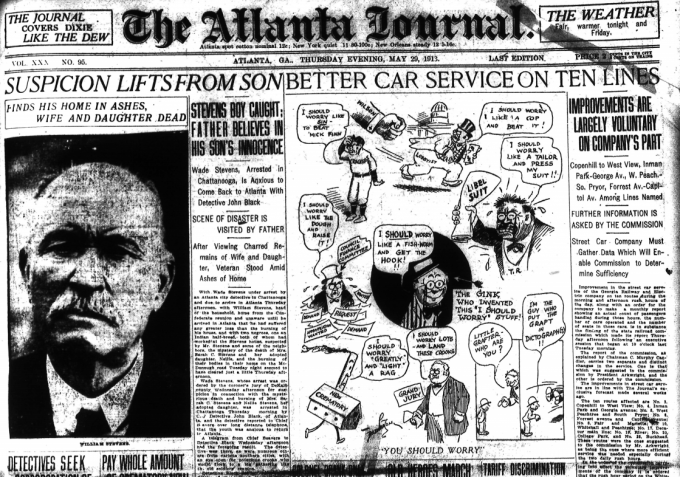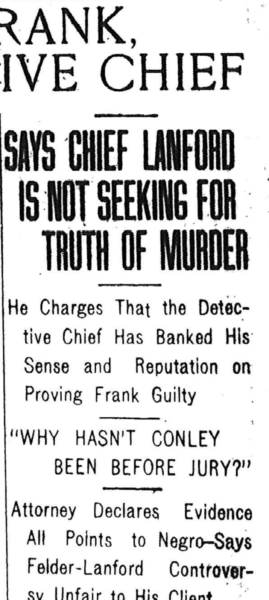 Another in our series of new transcriptions of contemporary articles on the Leo Frank case.
Another in our series of new transcriptions of contemporary articles on the Leo Frank case.
The Atlanta Journal
Tuesday, June 10, 1913
SAYS CHIEF LANFORD IS NOT SEEKING FOR TRUTH OF MURDER
He Charges That the Detective Chief Has Banked His Sense and Reputation on Proving Frank Guilty
“WHY HASN’T CONLEY BEEN BEFORE JURY?”
Attorney Declares Evidence All Points to Negro—Says Felder-Lanford Controversy Unfair to His Client
Luther Z. Rosser, chief counsel for Leo M. Frank, the pencil factory superintendent, who is under indictment for the murder of Mary Phagan, Tuesday afternoon broke his persistent silence regarding the case and gave out a statement for publication.
Mr. Rosser gives as a reason for this statement the fact that Thomas B. Felder has publicly charged Detective Chief Lanford with trying to shield Frank and that the detective chief has in turn publicly accused Felder with having been employed in the interest of Frank.
The accuracy of both charges is denied. Mr. Rosser asserts that Chief Lanford has “banked his sense and reputation as both a man and politician on Frank’s guilt,” and that if he had been seeking the murderer of Mary Phagan with an open mind and not seeking to vindicate his announced opinion of Frank’s guilt, the negro Conley would have already told the whole truth.
Mr. Rosser declares that both the actions and statements of the negro Conley bear the marks of guilt. He states that in making his revelations concerning the murder, Conley is handicapped by Lanford’s opinion.
Mr. Rosser inquires why it was the detectives did not present Conley as a witness before the coroner’s jury and why they now prevent him from telling his story to the grand jury, which he says should determine whether the negro should be indicted, and if so on what count.
MR. ROSSER’S STATEMENT.
Following is Mr. Rosser’s statement in full: Continue Reading →

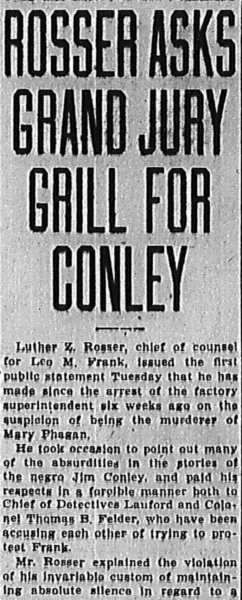 Another in
Another in 